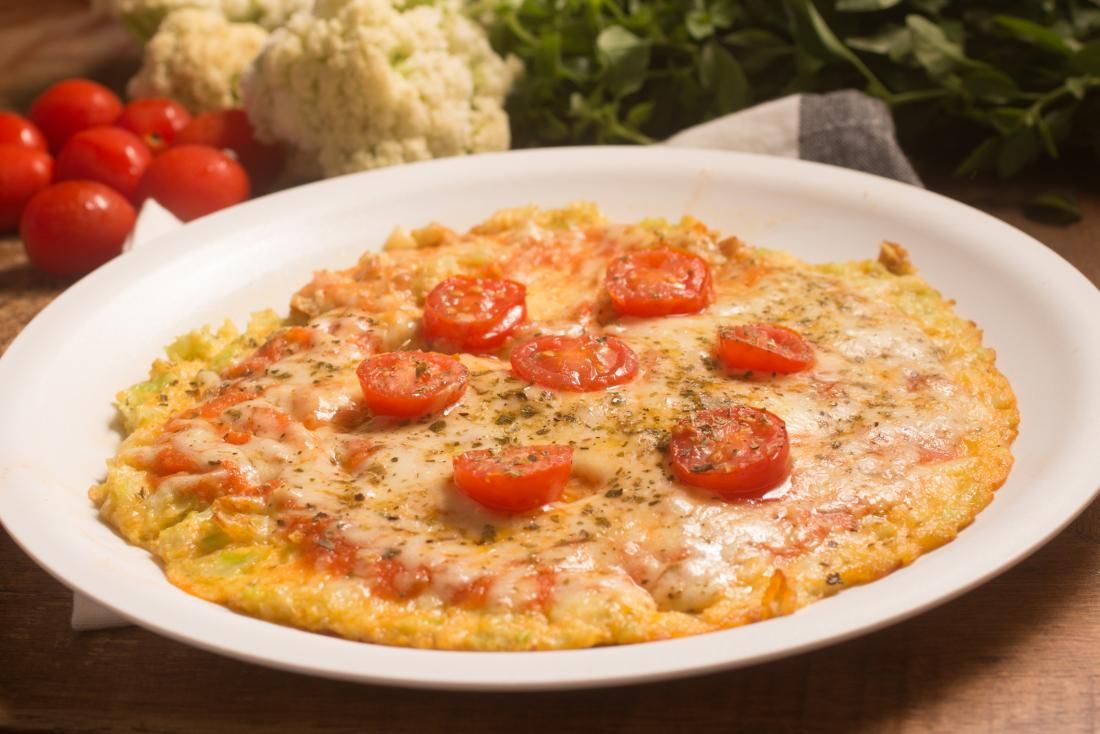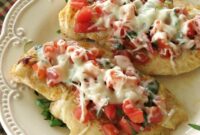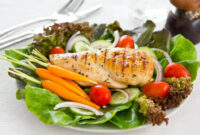South Beach Diet pizza offers a surprisingly delicious and healthy alternative to traditional pizza. This guide explores how to adapt classic pizza recipes to fit the South Beach Diet’s principles, focusing on low-carbohydrate crusts and nutritious toppings. We’ll delve into the nutritional benefits and challenges of incorporating this modified pizza into your diet, providing practical tips and recipes for success.
We’ll examine the core tenets of the South Beach Diet, emphasizing its approach to carbohydrate intake and outlining permitted and restricted foods. This will be followed by a detailed comparison of the nutritional profiles of traditional and South Beach Diet-friendly pizzas, showcasing the significant differences in macronutrient content. Finally, we’ll provide several delicious and easy-to-follow recipes to help you enjoy pizza while staying true to your dietary goals.
South Beach Diet Principles and Pizza
The South Beach Diet is a popular weight-loss plan that emphasizes healthy eating habits and sustainable weight management. Unlike many restrictive diets, it focuses on making long-term lifestyle changes rather than short-term weight loss. This approach allows for greater adherence and better overall health outcomes.
Core Tenets of the South Beach Diet
The South Beach Diet’s core principles revolve around controlling blood sugar levels and promoting satiety through strategic food choices. It prioritizes lean protein, healthy fats, and non-starchy vegetables while limiting refined carbohydrates and unhealthy fats. This approach helps to stabilize energy levels, reduce cravings, and facilitate weight loss. The diet is divided into phases, with each phase gradually introducing more carbohydrates.
Carbohydrate Intake on the South Beach Diet
The South Beach Diet carefully manages carbohydrate intake. Initially, it restricts simple carbohydrates like white bread, sugary drinks, and processed foods. These are known to cause rapid spikes in blood sugar, leading to energy crashes and increased hunger. As the dieter progresses through the phases, complex carbohydrates, such as whole grains and legumes, are gradually reintroduced. The focus remains on choosing carbohydrates that are rich in fiber and nutrients to promote sustained energy and prevent blood sugar fluctuations.
Allowed and Restricted Foods on the South Beach Diet
The South Beach Diet encourages the consumption of lean protein sources (fish, poultry, beans, tofu), healthy fats (avocado, nuts, olive oil), and non-starchy vegetables (broccoli, spinach, peppers). Foods typically restricted include sugary drinks, white bread, pastries, processed meats, and foods high in refined carbohydrates. This careful selection of foods ensures a balanced intake of nutrients while minimizing unhealthy carbohydrates and fats.
Nutritional Profile of Pizza and South Beach Diet Guidelines
A traditional pizza often contains a high proportion of refined carbohydrates from the crust, high levels of saturated fat from cheese and processed meats, and relatively low amounts of fiber and essential nutrients. This nutritional profile directly contradicts the South Beach Diet’s principles of controlling blood sugar and promoting satiety. In contrast, a South Beach Diet-friendly pizza would emphasize a whole-wheat or cauliflower crust, lean protein toppings (grilled chicken, vegetables), and a reduced amount of cheese. This modified version aligns more closely with the diet’s guidelines, focusing on healthy fats, lean proteins, and reduced refined carbohydrates.
Macronutrient Comparison: Traditional vs. South Beach Pizza
| Nutrient | Traditional Pizza (per slice) | South Beach Pizza (per slice) |
|---|---|---|
| Carbohydrates (g) | 30-40 | 15-20 |
| Protein (g) | 8-12 | 15-20 |
| Fat (g) | 15-20 | 8-12 |
Adapting Pizza Recipes for the South Beach Diet
The South Beach Diet emphasizes whole, unprocessed foods and limits refined carbohydrates and sugars. While pizza might seem off-limits, with creative substitutions and mindful ingredient choices, you can enjoy delicious, diet-friendly versions. This section details three South Beach-compliant pizza recipes, highlighting variations in crust and topping selections to maintain nutritional balance and delicious flavor.
Cauliflower Crust Pizza
This recipe offers a low-carbohydrate alternative to traditional pizza dough. The cauliflower provides a subtly sweet and slightly firm base, perfect for holding a variety of toppings.
- Ingredients: 1 large head cauliflower, riced; 1 large egg, beaten; 1/2 cup grated Parmesan cheese; 1/4 cup almond flour; 1 teaspoon Italian seasoning; salt and pepper to taste; your choice of South Beach-friendly pizza sauce and toppings.
- Instructions: Preheat oven to 400°F (200°C). Steam or microwave riced cauliflower until tender. Squeeze out excess moisture thoroughly. In a bowl, combine cauliflower, egg, Parmesan cheese, almond flour, Italian seasoning, salt, and pepper. Mix well. Press mixture onto a parchment-lined baking sheet to form a thin crust. Bake for 15-20 minutes, or until lightly golden. Remove from oven, add sauce and toppings, and bake for another 5-10 minutes, or until cheese is melted and bubbly.
Whole Wheat Thin Crust Pizza
This option utilizes whole wheat flour for a slightly higher carbohydrate count, but still provides fiber and nutrients compared to refined white flour. The thin crust keeps the overall carbohydrate intake manageable.
- Ingredients: 1 cup whole wheat flour; 1/2 teaspoon baking powder; 1/4 teaspoon salt; 1/2 cup warm water; 1 tablespoon olive oil; your choice of South Beach-friendly pizza sauce and toppings.
- Instructions: Preheat oven to 450°F (230°C). In a bowl, combine flour, baking powder, and salt. Add warm water and olive oil, mixing until a dough forms. Roll out the dough thinly on a lightly floured surface. Transfer to a baking sheet. Bake for 8-10 minutes, or until lightly golden. Remove from oven, add sauce and toppings, and bake for another 5-7 minutes, or until cheese is melted and bubbly.
Portobello Mushroom Pizza
This recipe uses a large portobello mushroom cap as the base, eliminating the need for any crust entirely. It’s a naturally low-carb and flavorful option.
- Ingredients: 2 large portobello mushroom caps, stems removed and gills scraped; 1 tablespoon olive oil; salt and pepper to taste; your choice of South Beach-friendly pizza sauce and toppings.
- Instructions: Preheat oven to 375°F (190°C). Brush mushroom caps with olive oil and season with salt and pepper. Place caps gill-side up on a baking sheet. Bake for 10-15 minutes, or until slightly softened. Remove from oven, add sauce and toppings, and bake for another 5-7 minutes, or until cheese is melted and bubbly.
Suitable Low-Carb Pizza Toppings
Numerous toppings align with the South Beach Diet’s principles. Lean protein sources, plenty of vegetables, and moderate cheese are key.
- Lean Protein: Grilled chicken breast, lean ground turkey, shrimp, or Canadian bacon (in moderation).
- Vegetables: Spinach, mushrooms, onions, bell peppers, tomatoes, zucchini, and artichoke hearts.
- Cheese (in moderation): Part-skim mozzarella, feta, or goat cheese.
- Other: Fresh herbs (basil, oregano, parsley), spices (garlic powder, onion powder, red pepper flakes).
Nutritional Impact of South Beach Diet Pizza
South Beach Diet pizza offers a potentially healthier alternative to traditional pizza, primarily by focusing on lower-glycemic ingredients and emphasizing lean protein and healthy fats. However, it’s crucial to understand the nuances of its nutritional profile to maximize benefits and minimize potential drawbacks. This section delves into the specific nutritional impacts of various components of South Beach Diet pizza.
Glycemic Index of Pizza Crust Options
The glycemic index (GI) of the crust significantly impacts the overall nutritional value of the pizza. Traditional pizza crusts, made with refined white flour, have a high GI, leading to rapid blood sugar spikes. South Beach Diet pizza recipes often utilize alternative crusts, such as those made from almond flour, cauliflower, or whole-wheat flour (depending on the phase of the diet). These options generally have a lower GI than traditional crusts, resulting in a more gradual and sustained release of glucose into the bloodstream. For example, a cauliflower crust will have a significantly lower GI than a white flour crust. The specific GI values vary depending on the recipe and ingredients used, but the general principle remains: lower-GI crusts contribute to better blood sugar control.
Impact of Toppings on Nutritional Value
The choice of toppings drastically influences the nutritional profile of South Beach Diet pizza. Lean protein sources like grilled chicken breast, turkey, or shrimp add protein and satiety without significantly increasing fat or carbohydrate content. Abundant vegetables, such as bell peppers, onions, mushrooms, and spinach, contribute essential vitamins, minerals, and fiber. However, high-fat toppings like pepperoni or excessive amounts of cheese can negate some of the health benefits. Choosing lower-fat cheese options and limiting processed meats are crucial for maintaining a balanced nutritional profile.
Portion Control and Nutritional Profile
Even with healthier ingredients, portion control remains paramount. A large South Beach Diet pizza, even with a low-GI crust and healthy toppings, can still contribute to a high overall calorie intake. Sticking to recommended serving sizes ensures that the nutritional benefits are not overshadowed by excessive calorie consumption. For example, opting for a smaller personal pizza instead of a large one can significantly reduce calorie and macro intake. Careful portioning helps maintain the intended dietary goals of the South Beach Diet.
Calorie and Macro Content Comparison
| Pizza Variation | Calories (approx.) | Protein (g) | Carbohydrates (g) | Fat (g) |
|---|---|---|---|---|
| Traditional Cheese Pizza (1 slice) | 250-300 | 8-10 | 30-35 | 10-15 |
| South Beach Almond Flour Crust Pizza (1 slice) | 180-220 | 12-15 | 15-20 | 10-12 |
| South Beach Cauliflower Crust Pizza (1 slice) | 150-180 | 10-12 | 10-15 | 8-10 |
| South Beach Chicken & Veggie Pizza (1 slice) | 200-250 | 15-20 | 18-22 | 8-10 |
Practical Considerations and Challenges
Successfully integrating South Beach Diet pizza into your lifestyle requires careful planning and awareness of potential hurdles. While delicious and satisfying, it’s crucial to understand the challenges and develop strategies to overcome them for long-term adherence to the diet. This section addresses practical considerations to ensure a smooth and sustainable approach.
Challenges in Incorporating South Beach Diet Pizza
The primary challenge lies in balancing the pizza with the overall dietary restrictions. South Beach Diet emphasizes low-glycemic carbohydrates and healthy fats. While adapted recipes can minimize carbohydrate intake, pizza, even in its modified form, remains a relatively calorie-dense food. Overconsumption can easily lead to exceeding daily caloric targets, potentially hindering weight loss or maintenance. Another challenge is the potential for cravings. The delicious nature of pizza might trigger desires for traditional, higher-carbohydrate versions, potentially jeopardizing adherence. Finally, finding the time and resources to prepare South Beach Diet pizza consistently can be difficult for busy individuals.
Convenient Preparation of South Beach Diet Pizza
Preparing South Beach Diet pizza conveniently involves smart planning and preparation. Pre-making the crust ahead of time and storing it in the freezer allows for quick assembly when cravings strike. Utilizing pre-chopped vegetables and readily available South Beach-friendly toppings also saves valuable time. Batch cooking sauce and storing it in portions ensures easy access. Investing in a good quality pizza stone or baking sheet can improve the cooking process and yield better results. Consider using pre-made cauliflower crusts as a time-saving option, though it’s important to check the nutritional information to ensure it aligns with your dietary goals.
Maintaining Dietary Consistency with Pizza Consumption
Maintaining consistency requires mindful portion control. Instead of a large pizza, opt for a smaller individual-sized one or a few slices. Integrating pizza into a balanced meal plan is essential. For instance, pair a slice of South Beach Diet pizza with a large salad containing leafy greens, vegetables, and a healthy vinaigrette. Choosing lower-calorie toppings and focusing on high-fiber options helps to increase satiety and reduce the overall impact on blood sugar levels. Regularly reviewing and adjusting your meal plan based on your progress helps maintain consistency. Scheduling pizza nights can also help prevent impulsive choices.
Balancing South Beach Diet Pizza with Other Meals
Successfully integrating South Beach Diet pizza into a balanced meal plan requires careful consideration of the overall macronutrient distribution. If you plan to enjoy pizza for dinner, ensure your other meals throughout the day are lighter and focus on lean proteins, non-starchy vegetables, and healthy fats. For example, a breakfast of eggs with spinach and a small portion of avocado, followed by a lunch of grilled chicken salad, can create a balanced meal plan. Remember to monitor your carbohydrate intake across the entire day to stay within the guidelines of the South Beach Diet.
Substitutes for Common Pizza Ingredients
To reduce carbohydrate intake, consider these substitutes:
- Crust: Cauliflower crust, portobello mushroom caps, zucchini slices, or a thin whole-wheat crust (in moderation).
- Cheese: Part-skim mozzarella, reduced-fat cheddar, or feta cheese (in moderation).
- Sauce: Marinara sauce (check for added sugars), pesto, or a homemade sauce using low-carb vegetables.
- Toppings: Abundant vegetables (onions, peppers, mushrooms, spinach, olives), lean meats (chicken, turkey, shrimp), and low-fat cheeses. Avoid high-sugar options like pineapple or pepperoni.
Outcome Summary
Ultimately, South Beach Diet pizza demonstrates that healthy eating doesn’t have to sacrifice flavor or enjoyment. By understanding the principles of the South Beach Diet and employing creative recipe adaptations, you can savor delicious pizza while maintaining a balanced and nutritious diet. Remember to prioritize portion control and choose nutrient-rich toppings to maximize the health benefits. Enjoy the journey to a healthier and tastier you!



